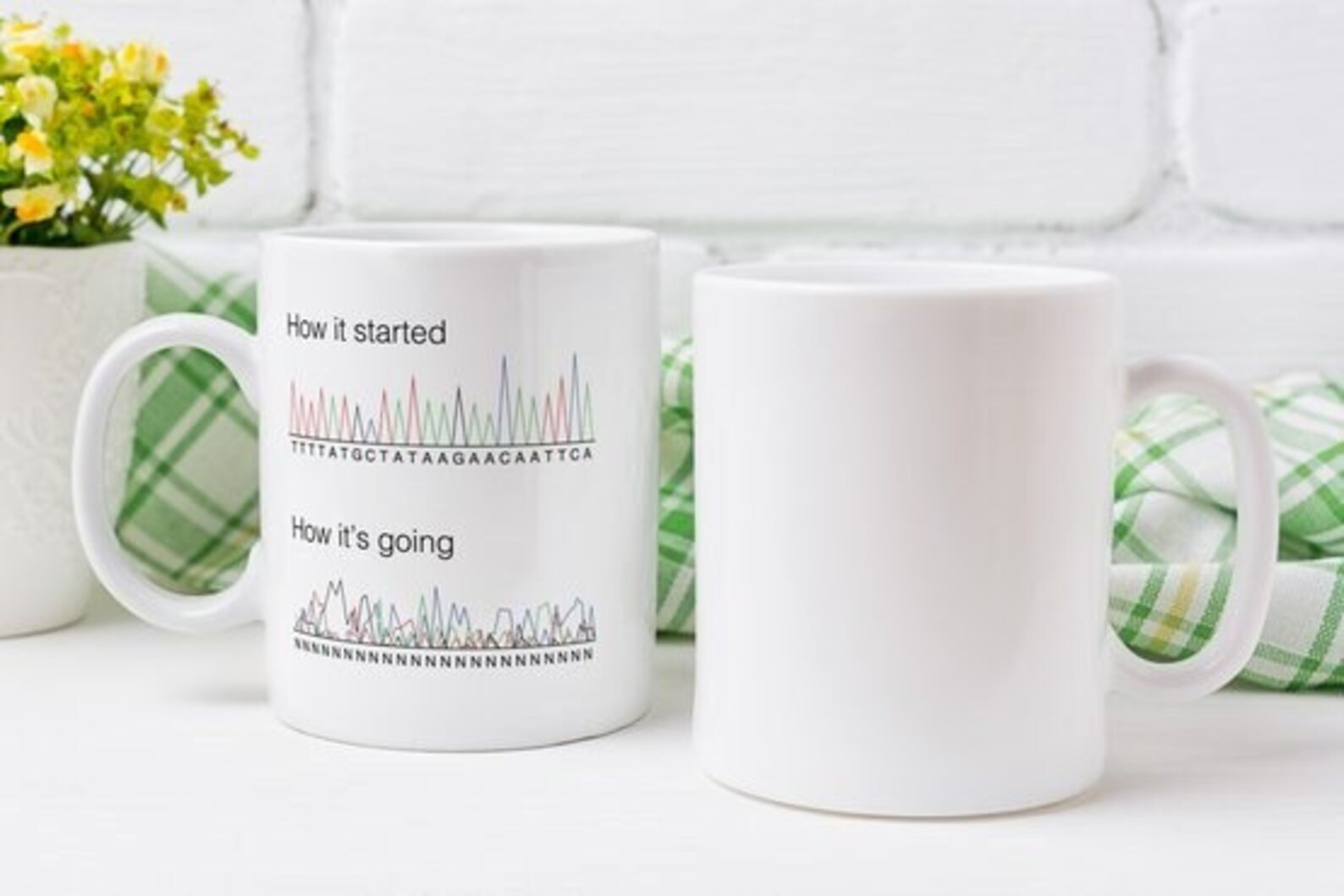Today, I'm picking a topic solely because there was a funny mug I saw that requires this entire background on Sanger Sequencing. I'll send the picture too.
Overview:
- What it is/what it's used for
- How it works
- Data processing
- History
This one is going to be long but for anyone who's going into anything remotely related to genetics, it's good to know. Also, you will not fully understand the joke without the first three sections.
What it is + What it's Used for
Sanger Sequencing is a DNA sequencing technique developed by Frederick Sanger & co in 1977. It uses electrophoresis which is a technique that takes advantage of DNA's negative charge to run it through a gel using a current. It's pretty accurate (99.99% according to Wikipedia) and can sequence a good number of nucleotides so it's still commonly in use, despite the invention of next generation (next gen) sequencing.
How it Works: Dye-Terminator Sequencing
Sequencing starts with a process similar to PCR where DNA splits into two strands and a DNA polymerase (TAQ is the most common) attaches dNTPs (the nucleic bases to be stuck on) but there are also some ddNTPs, which, once added on, are a dead end for the polymerase. Each ddNTP is tagged with a fluorescent marker, one per kind of base (ATCG). The idea behind this is ddNTPs will be added one base after the previous one and then production will stop for that particular strand. When all the DNA runs through the electrophoresis gel, there will be strands that happen to have ddNTPs at the same place and the sequencing machine scans their fluorescent tags to determine which base is there. This is important for measuring accuracy!
There are other variations, but this method is the most popular.
Data Processing
The number of matching tags at any given point determines its accuracy - the more matching and fewer nonmatching, the better the accuracy of that particular point. The machine does most of the matching up pieces based on length so you get a nice set of coloured lines sent to your computer in the form of a chromatogram. From there, it's up to you to process the data depending on what you're doing. One of the downsides of Sanger is the beginning and end of the chromatogram are usually pretty low quality so you have to plan carefully.
History
The first attempts at gene sequencing were with RNA, as it's easier to amplify and usually shorter. In 1965, Robert Holley produced the first whole nucleic acid sequence, which codes for alanine in a species of Saccharomyces around the same time Sanger was developing a method using radioactive tags and genetic fragments. By using Sanger's early method, Walter Fier's lab produced the first full protein-coding gene sequence for a bacteriophage coating in 1972. Techniques kept getting better as scientists transferred this method to small segments of DNA, then better but complex versions of DNA sequencing, and then in 1980 Sanger's incredible new sequencing won him his second Nobel prize in chemistry, the first in 1958 for determining the amino acid structures of different proteins. He is one of three people to win multiple Nobels in the same field and one of five to receive two Nobels. He died in 2013.
Here's the promised image!

Comments
Post a Comment